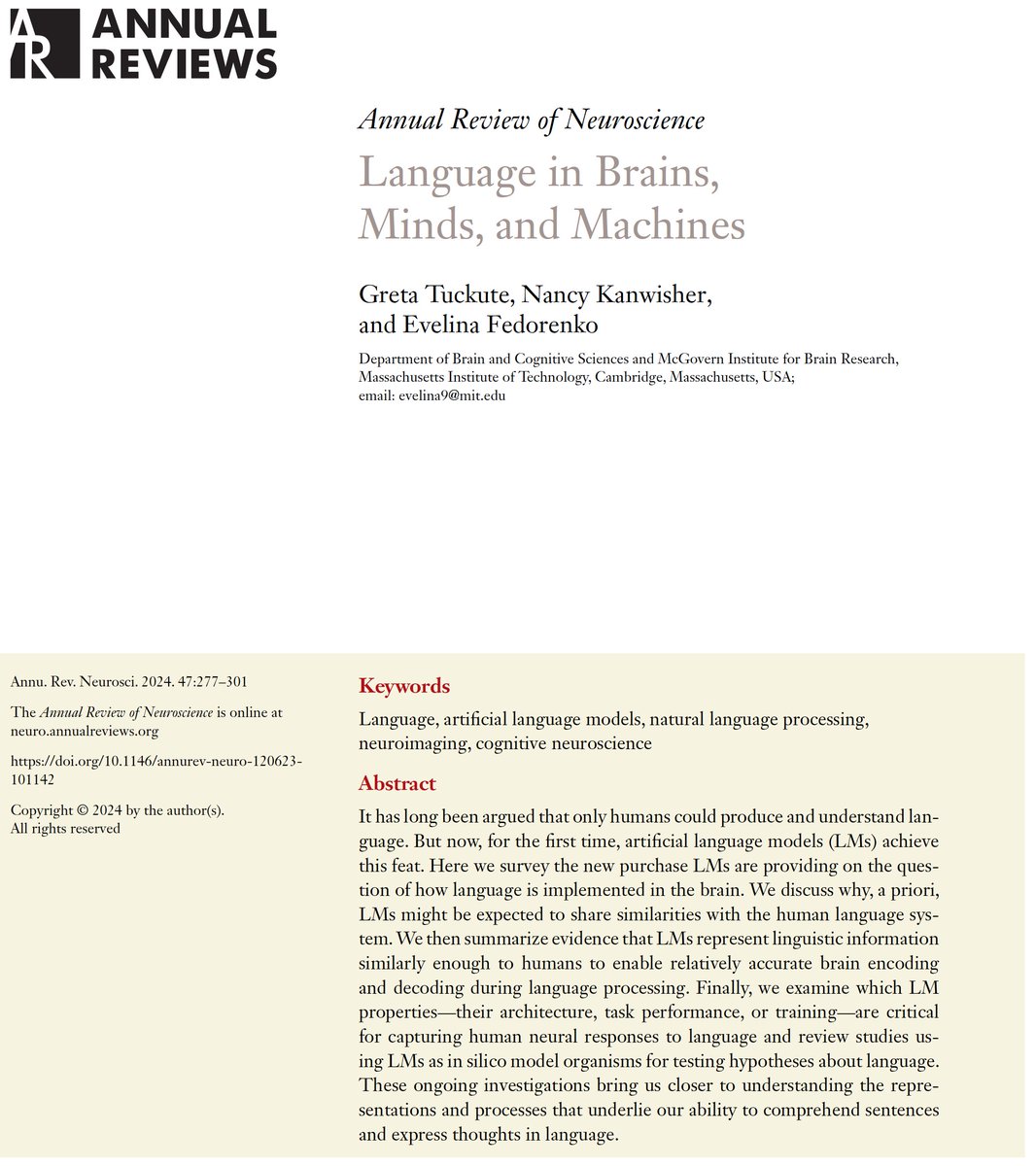
PhD candidate, Brain and Cognitive Sciences MIT. Interested in language in biological brains and artificial ones.
How to get URL link on X (Twitter) App



 2/
2/https://twitter.com/ev_fedorenko/status/1778758537583210783


 "Driving and suppressing the human language network using large language models"
"Driving and suppressing the human language network using large language models" 
